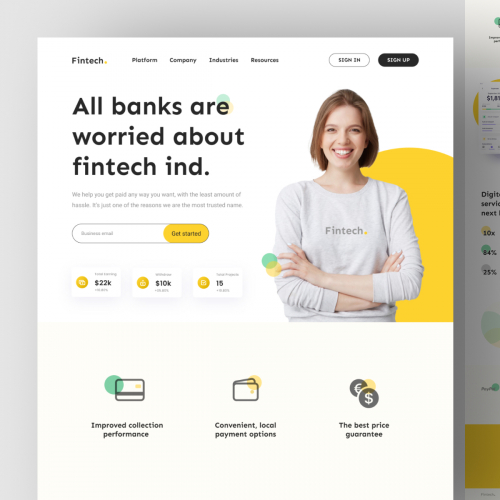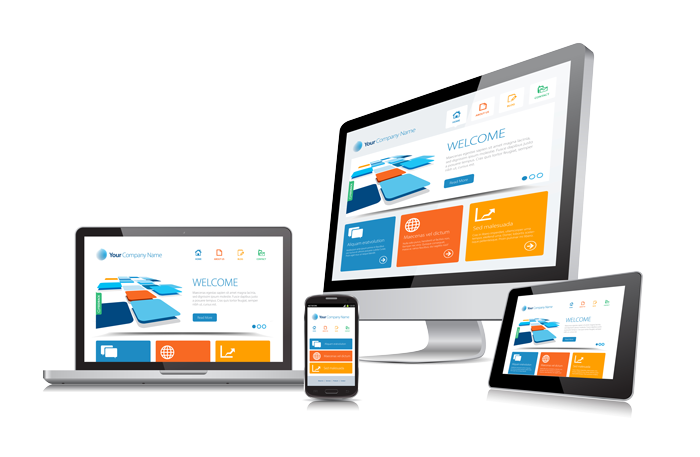Discover Ingenious Approaches to Boost Your Website Design Experience
Discover Ingenious Approaches to Boost Your Website Design Experience
Blog Article
Understanding the Duty of Responsive Design in Modern Website Advancement
In today's electronic landscape, receptive design is no more a luxury yet a need in web site development. As users accessibility sites from an array of tools, from large desktop monitors to pocket-sized mobile phones, guaranteeing a consistent and appealing customer experience is vital. Receptive design accomplishes this by employing scalable media and adaptable designs, dealing with the nuanced requirements of each tool. Yet, the value of receptive style expands past individual experience-- it is also an essential consider search engine optimization and access. How precisely does it influence these areas, and what approaches guarantee its reliable execution?
Importance of Responsive Design
In today's digital landscape, the relevance of responsive design in website growth can not be overemphasized. Responsive design enables websites to instantly adjust their layout and functionality based on the display size and alignment of the tool being used.
Additionally, receptive style is crucial for search engine optimization (SEO) Internet search engine like Google focus on mobile-friendly internet sites in their search results page, suggesting that a receptive style can substantially impact a website's presence and position. This optimization not just improves the customer experience but likewise drives natural web traffic and raises the capacity for conversion and earnings generation.
Additionally, receptive design offers services a cost-effective solution by eliminating the demand for numerous variations of a web site. By improving internet advancement processes and lowering maintenance efforts, firms can allocate sources much more successfully, inevitably leading to boosted return on investment. Hence, responsive design is important in today's competitive electronic environment.
Key Elements of Responsive Style
To properly execute receptive layout, it is necessary to focus on numerous vital elements that make sure optimum capability and customer experience throughout diverse gadgets. One of the basic parts is the versatile grid format, which permits developers to develop fluid grids that immediately adjust to different screen dimensions. This makes certain that material preserves symmetry and readability, regardless of the tool being utilized.

Furthermore, touch-friendly navigation is crucial for receptive layout. Carrying out easily tappable buttons and user-friendly motion controls boosts functionality on touchscreen gadgets. Prioritizing performance optimization is additionally crucial, as it boosts filling times and reduces bounce rates, specifically on mobile connect with variable speed.
Finally, employing a mobile-first strategy makes certain that the design is originally maximized for smaller sized displays prior to increasing to accommodate desktops. This technique assures that necessary performance and aesthetic appeals are preserved across all systems, inevitably boosting the general customer experience.
Influence on Individual Involvement
Responsive style considerably affects user interaction by enhancing access and fulfillment across numerous devices (Website Design). By ensuring that an internet site's layout adapts seamlessly to different display sizes, responsive design permits users to gain access to material easily, whether they are using a mobile phone, desktop computer, or tablet .
Additionally, responsive style adds to faster page filling times, which is essential for maintaining user passion. Users are a lot more likely to abandon a website if it takes also lengthy to load, especially on mobile phones. By maximizing efficiency for varied platforms, responsive design lessens loading delays, maintaining users engaged and decreasing bounce rates.
Search Engine Optimization Perks of Responsive Design
While improving customer experience is a key goal, responsive layout also plays an important function in enhancing an internet site's search engine optimization (SEO) Online search engine, especially Google, focus on mobile-friendly internet sites, hence awarding those that provide seamless experiences throughout tools. Responsive layout ensures that a site adapts to different screen sizes, removing the demand for different mobile and desktop versions. This versatility not just boosts user experience however also lowers the risk of replicate web content, which can negatively influence SEO rankings.
Furthermore, responsive layout aids in faster page packing times, a critical consider search engine optimization. Internet search engine favor internet Resources sites that load promptly, identifying that go to this web-site individuals are more probable to abandon sites that take also long to present. By utilizing responsive layout, programmers can enhance and optimize photos material, making sure effective packing and boosted online search engine positions.
In addition, a natural link structure throughout devices streamlines the indexing procedure for online search engine, boosting crawl performance. This harmony in Links reinforces a site's authority and credibility, bring about improved visibility in search results page. In recap, receptive style is not just a trend yet a fundamental component of search engine optimization strategy, making certain websites are both straightforward and search engine suitable.
Executing Responsive Style Methods
In the realm of modern-day web development, carrying out responsive layout approaches belongs to crafting a flexible canvas that adjusts flawlessly to different screen measurements. Central to this technique is the usage of flexible grid-based formats, which utilize family member devices like percents instead than repaired devices such as pixels. This ensures that material scales properly across devices. Another essential technique includes employing media questions, which make it possible for designers to use various designs based on the attributes of the gadget, such as width, resolution, and elevation.
Responsive pictures and media are likewise vital parts. By utilizing methods like CSS media questions and the HTML 'photo' aspect, programmers can offer suitably sized images based on the individual's gadget, enhancing lots times and enhancing user experience. Additionally, the unification of liquid typography makes certain that text is clear and cosmetically pleasing on any kind of screen, accomplished with scalable devices like 'rapid eye movement' and 'em'.

Conclusion
Responsive style makes up a crucial facet of modern website advancement, substantially improving individual experience across a series of devices. By integrating versatile layouts, scalable photos, and touch-friendly navigation, it boosts individual involvement and maximizes site performance. Responsive style is critical for Search engine optimization, as it lines up with search engines' choice for mobile-friendly sites, therefore raising visibility and organic traffic. Ultimately, carrying out responsive style methods ensures boosted access and functionality, providing internet sites more reliable and user-centric.
To efficiently carry out responsive design, it is important to concentrate on a number of crucial aspects that guarantee optimum functionality and user experience across varied tools.Receptive layout dramatically influences individual interaction by boosting accessibility and complete satisfaction throughout various gadgets. By ensuring that an internet site's format adapts flawlessly to various display sizes, receptive design allows individuals to gain access to web content effortlessly, whether they are utilizing a smart device, tablet, or desktop .While enhancing user experience is a main objective, responsive layout additionally plays an essential function in improving an internet site's search engine optimization (SEO)Responsive style comprises a vital facet of modern site development, substantially improving individual experience throughout a variety of devices.
Report this page